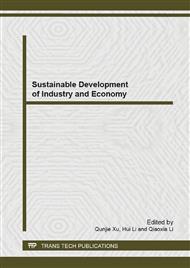p.942
p.946
p.950
p.954
p.958
p.963
p.967
p.971
p.976
Study on Carbon Footprint of Container Transportation System
Abstract:
As an important hub of logistic chain, seaport is a major energy consumer. Therefore, the carbon footprint of container transportation system is studied in the paper. First, the operation process of container transportation system is analyzed. Second, the carbon footprint quantitative method is introduced. Finally, a case study is given as an example. Results indicate that carbon emission of quayside cranes accounts for the largest proportion in the transportation system. So, it's necessary to reduce the carbon emission of quayside crane.
Info:
Periodical:
Pages:
958-962
Citation:
Online since:
December 2013
Authors:
Price:
Сopyright:
© 2014 Trans Tech Publications Ltd. All Rights Reserved
Share:
Citation:


